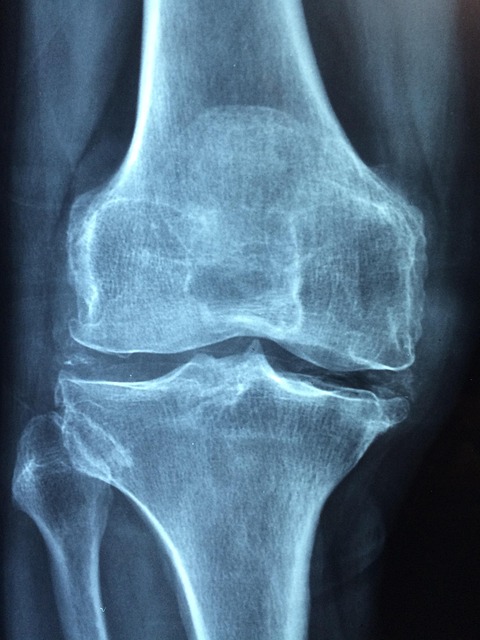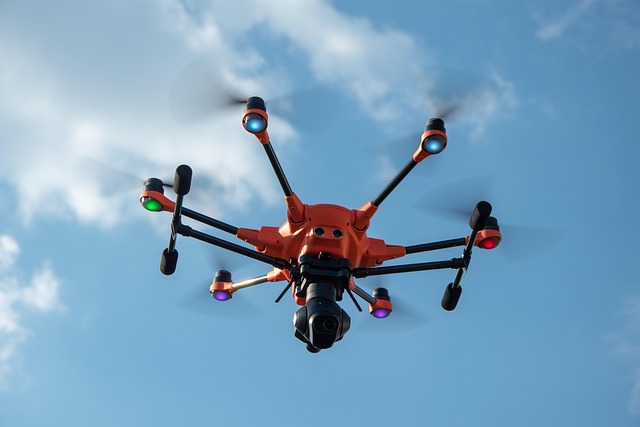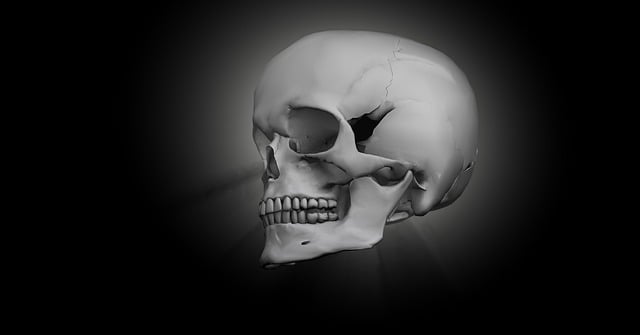Safeguarding Patients: Radiation Concerns in 3D/4D Medical Imaging

3D and 4D medical imaging offers valuable diagnostic tools but carries radiation risks. To safely ut…….
In the ever-evolving realm of healthcare, medical imaging has emerged as a powerful tool, offering doctors and researchers unprecedented insights into the human body. Among its most advanced manifestations are 3D and 4D medical imaging technologies, which have transformed diagnostic accuracy and clinical decision-making. This article delves into the world of 3D and 4D medical imaging, exploring its definition, historical evolution, global impact, technological advancements, and future prospects. By the end, readers will gain a comprehensive understanding of this revolutionary field and its potential to shape healthcare practices worldwide.
Definition:
3D and 4D medical imaging refers to advanced visualization techniques that generate detailed three-dimensional (3D) or four-dimensional (4D) representations of internal body structures and organs. Unlike traditional two-dimensional (2D) imaging methods, these technologies capture dynamic processes within the body over time, providing a more holistic view of anatomical relationships and physiological functions.
Core Components:
Imaging Modalities: Key modalities include magnetic resonance imaging (MRI), computed tomography (CT), ultrasound, and positron emission tomography (PET). Each offers unique advantages, such as MRI’s excellent soft tissue contrast, CT’s high spatial resolution, ultrasound’s real-time capabilities, and PET’s metabolic insights.
3D/4D Reconstruction: Advanced algorithms and software are employed to reconstruct raw imaging data into 3D or 4D models. These tools enable visualization, analysis, and measurement of complex anatomical structures, allowing for more precise diagnostics and treatment planning.
Interactive Visualization: 3D and 4D images can be manipulated and explored interactively, providing healthcare professionals with a dynamic understanding of the body’s internal architecture. This capability aids in identifying abnormalities, following organ motion, and visualizing surgical procedures.
Historical Context:
The journey towards 3D and 4D medical imaging began with the development of X-ray technology in the late 19th century, followed by CT scans in the 1970s and MRI in the 1980s. These breakthroughs laid the foundation for more advanced imaging techniques. Over time, technological improvements led to higher spatial and temporal resolutions, enabling the creation of 3D and 4D models. The integration of computer-aided design (CAD) software and powerful computing capabilities further enhanced the capability of medical professionals to interpret and analyze these images.
Significance:
3D and 4D medical imaging plays a pivotal role in modern healthcare by:
Enhancing Diagnostic Accuracy: Providing more detailed information about anatomical structures, helping radiologists detect subtle abnormalities that may be missed on 2D images.
Guiding Treatment Planning: Facilitating more precise surgery and radiation therapy by visualizing organ positions and movements over time.
Improving Patient Care: Enabling personalized treatment approaches based on individual anatomies and physiological dynamics.
Research and Education: Serving as valuable tools for medical research, anatomical studies, and educational purposes, enhancing the understanding of complex body systems.
The global impact of 3D and 4D medical imaging is profound, with widespread adoption across regions due to its potential to improve healthcare outcomes. Key trends shaping this field include:
| Region | Trends | Impact |
|---|---|---|
| North America | Increasing use of advanced MRI and CT technologies, integration of artificial intelligence (AI) for image analysis | Enhanced diagnostic accuracy and reduced interpretation errors |
| Europe | Strong focus on 4D imaging for fetal and cardiovascular applications, collaboration between academia and industry | Improved perinatal care and personalized treatment for cardiovascular diseases |
| Asia-Pacific | Rapidly growing market driven by increasing healthcare expenditure and aging populations | Better access to advanced imaging technologies and improved diagnostic capabilities |
| Middle East & Africa | Growing adoption of 3D/4D imaging in specialized centers, partnerships with international institutions | Advanced diagnostics and treatment options for complex medical conditions |
These trends reflect a global push towards more sophisticated and personalized healthcare, underpinned by the transformative power of 3D and 4D medical imaging.
The global market for 3D and 4D medical imaging is experiencing steady growth, driven by rising healthcare expenditures, aging populations, and increasing demand for advanced diagnostic tools. According to a report by ResearchAndMarkets, the global medical imaging market size was valued at USD 162.7 billion in 2020 and is projected to grow at a CAGR of 8.4% from 2021 to 2028.
Major investments are being made in research and development, with pharmaceutical and healthcare companies allocating significant resources to advance imaging technologies. Private equity firms also play a crucial role in funding innovative startups focused on AI-driven image analysis and hardware improvements.
While the costs of 3D/4D imaging equipment and software are high, they offer long-term savings by reducing misdiagnoses, enabling more efficient procedures, and improving patient outcomes. Additionally, these technologies can aid in negotiating drug prices and clinical trial success rates, contributing to overall healthcare cost efficiency.
High-field MRI systems with magnetic fields strength above 7 Tesla offer improved spatial resolution and signal contrast, enabling more detailed 3D imaging of soft tissues. This technology is invaluable for neurological, musculoskeletal, and oncological applications.
This technique provides real-time visualization of blood flow within the body, allowing doctors to study cardiovascular dynamics in unprecedented detail. 4D flow MRI aids in diagnosing congenital heart defects, assessing vascular diseases, and planning interventional procedures.
Artificial intelligence algorithms are revolutionizing medical imaging by automating the analysis process, improving accuracy, and reducing interpretation time. AI can detect complex patterns, assist in diagnosis, and provide personalized treatment recommendations based on individual image data.
AR and VR technologies offer immersive experiences for both patients and healthcare professionals. AR can enhance surgical procedures by providing real-time guidance and visualization during operations, while VR enables remote consultation and training.
3D/4D imaging is crucial in cancer diagnosis and treatment planning. It aids in identifying tumors, assessing their extent, and visualizing changes over time following therapy. This information guides personalized treatment approaches, improving patient outcomes.
The dynamic nature of 4D imaging allows for detailed study of the heart’s movement and blood flow patterns. This is invaluable for diagnosing cardiac abnormalities, planning complex surgeries, and monitoring post-operative recovery.
Advanced MRI techniques provide detailed brain and spinal cord visualizations, aiding in diagnosing neurological conditions such as multiple sclerosis, stroke, and tumors. 3D models enable better understanding of complex neural structures and their interactions.
4D ultrasound offers real-time visualization of fetal development, providing valuable insights for prenatal care and enabling more precise diagnosis and treatment of fetal anomalies.
Despite its numerous advantages, 3D/4D medical imaging faces challenges related to high costs, complex hardware, and specialized training requirements. However, ongoing technological advancements, growing healthcare data availability, and increasing collaboration between academia, industry, and regulatory bodies hold the key to overcoming these obstacles.
The future of 3D and 4D medical imaging is promising, with potential developments including:
Wider Availability: Increased accessibility through improved hardware design, cost reduction, and integration into routine healthcare practices.
Personalized Medicine: Tailoring diagnostic and treatment approaches based on individual patient data, enhancing efficacy and minimizing side effects.
Real-Time Monitoring: Continuous imaging during procedures to provide immediate feedback and improve outcomes.
Integration with Wearables: Combining imaging technologies with wearable devices for remote monitoring and early detection of health issues.
In conclusion, 3D and 4D medical imaging represents a significant leap forward in healthcare diagnostics and treatment. Its ability to offer detailed, dynamic visualizations of the body’s internal structures is transforming clinical practices worldwide. As technological advancements continue apace, this field will play an increasingly vital role in enhancing patient care, improving research, and shaping the future of healthcare.

3D and 4D medical imaging offers valuable diagnostic tools but carries radiation risks. To safely ut…….

Advanced imaging technologies like real-time 4D ultrasound revolutionize minimally invasive surgery…….

3D reconstruction for diagnostics has revolutionized dental and maxillofacial surgery by providing d…….

High-resolution 3D imaging offers valuable insights for diagnostics and inspections but raises safet…….

Advanced volumetric medical imaging techniques, including 3D and 4D imaging technologies like MRI an…….

3D reconstruction for diagnostics has revolutionized radiology and surgery by enabling detailed visu…….

Volumetric medical imaging, integrating 3D and 4D technologies, transforms diagnostic medicine by of…….

Real-time 4D ultrasound is a groundbreaking tool for neurology, offering dynamic imaging of brain st…….

AI is revolutionizing 3D MRI scan interpretation, significantly enhancing diagnostic capabilities fo…….

AI-powered 3D medical imaging is transforming healthcare diagnostics and treatment planning by analy…….